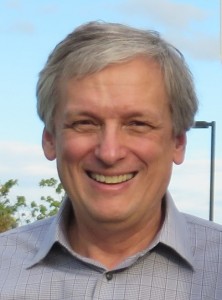Posted 9:50 a.m. Thursday, May 12, 2016

UWL’s convenient setting, Continuing Ed Office open doors for regional conference.
UWL’s convenient setting, Continuing Ed Office open doors for regional conference
UW-La Crosse’s proximity to 10 major U.S. cities is what brought a conference all about physical location to campus this spring. The Upper Midwest Geospatial Conference Wednesday and Thursday, May 25-26, at UWL is a new opportunity for professionals to share information and current trends in geospatial technology. The technology takes the study of geography to the next level to incorporate products used to display and analyze physical location. The products range from GPS units in cars and Google Earth to LiDAR, a new technology that uses lasers to record the distance between objects in one instantaneous, snapshot. “Geospatial technology is so powerful it offers solutions to a lot of society’s emerging problems,” says Stephen D. Swazee, Sr., GITA Admin and chief facilitator of the conference. “With this conference we hope to create better engagement and dialogue across state borders in a way that helps promote and solve emerging problems where geospatial is a powerful tool.” The learning conference, organized by UWL Continuing Education and Extension, is geared toward Geographic Information Systems (GIS) professionals; however, anyone can register online or show up the day of the conference. The cost and schedule is online at http://www.uwlax.edu/conted/GEOCON/ In addition to UWL’s convenient location, UWL’s Continuing Education and Extension Office has been a great partner to help organize the event and make sure plans run on track, notes Swazee. [caption id="attachment_46035" align="alignright" width="222"] Stephen D. Swazee, Sr.[/caption]
“Big kudos goes to the extension office,” he says. “They were an important element in the decision to have this learning event at UWL.”
Stephen D. Swazee, Sr.[/caption]
“Big kudos goes to the extension office,” he says. “They were an important element in the decision to have this learning event at UWL.”
What is geospatial?
Geospatial technology helps solve problems such as finding a driving destination on a car’s GPS system, mapping the spread of invasive species in a lake or locating a 911 caller when cell phone signals are unreliable. New products are continuously expanding the definition of geospatial technology. LiDAR — light detection and ranging — uses lasers to create a snapshot of the physical world in terms of distances between objects. Mounted LiDAR units on vehicles can collect up to one million points along the road per second as a vehicle drives down the road, eliminating the need for surveying crews to collect this information. The problems geospatial technology can help solve are not one-state problems, notes Swazee. The conference is the first time multiple state and regional geospatial non-profit organizations have worked together to organize a conference in the industry, and it may be the first time such a large, collaborative conference has happened nationally, adds Swazee. The conference is expected to attract about 250 people from three states —Minnesota, Wisconsin and Iowa. Keynote speakers are major players in the industry such as a representative from The Open Geospatial Consortium, an international non-profit organization that serves hundreds of companies from Microsoft to Google to make sure data used in geospatial technologies is transferable from one manufacturer to the next. Another keynote presenter is from the U.S. Geospatial Intelligence Foundation, an organization that brings together diverse disciplines involved in geospatial intelligence with the goal of improving national security. Presenters represent private companies such as Amazon.com and government agencies such as the U.S. Geological Survey, the Department of Natural Resources, and the Department of Transportation.UWL involvement
UWL has a GIS major and minor within its Department of Geography and Earth Science. The department has two GIS experts, one who was recently hired, Assistant Professor Niti Mishra. GIS is one of the department’s biggest strengths, says Cynthia Berlin, department chair. “Geographers are finding that GIS is really core to the field these days,” she explains. “It’s a growing field and one that our students are very interested in.” This conference will provide an opportunity to learn more about GIS technologies and help students make connections in the industry, she adds. Five UWL students in the major will volunteer to assist at the conference and four UWL faculty members — including the two who specialize in GIS — will present. UWL faculty presentations will highlight areas of their research that employ GIS technology to gather new information about physical locations that can help solve environmental issues. Among those presenting is Joan Bunbury who studies what environments looked like hundreds of thousands of years ago using lake sediment and GIS software. Mishra’s research focuses uses cutting edge technology in GIS, such as drones to create maps of fields and other forms of land cover. These maps can be analyzed for changes due to human impact. This ultimately can be shared with land use managers to help ease certain environmental impacts.The organizations that have come together to create UMGEOCON include:
- American Society for Photogrammetry and Remote Sensing – Western Great Lakes Region
- Geospatial Information and Technology Association
- Iowa Geographic Information Council
- Minnesota GIS/LIS Consortium
- SharedGeo
- Wisconsin Land Information Association
